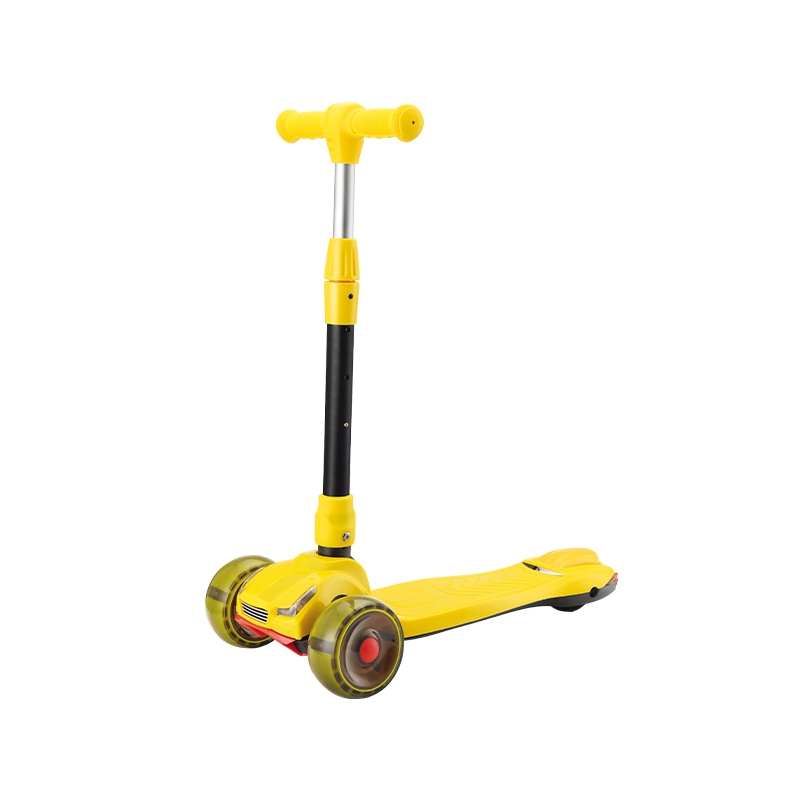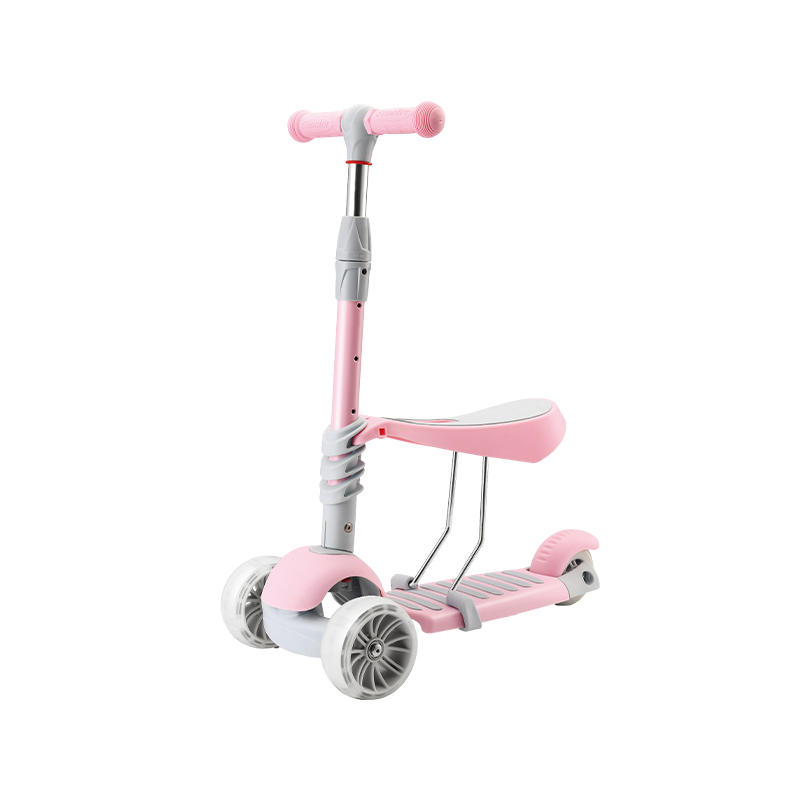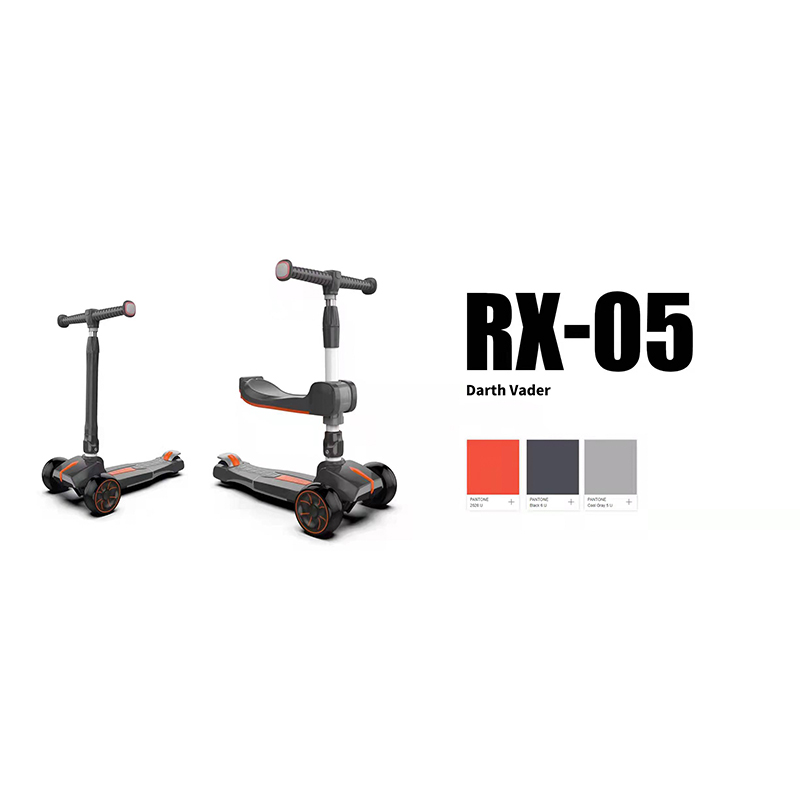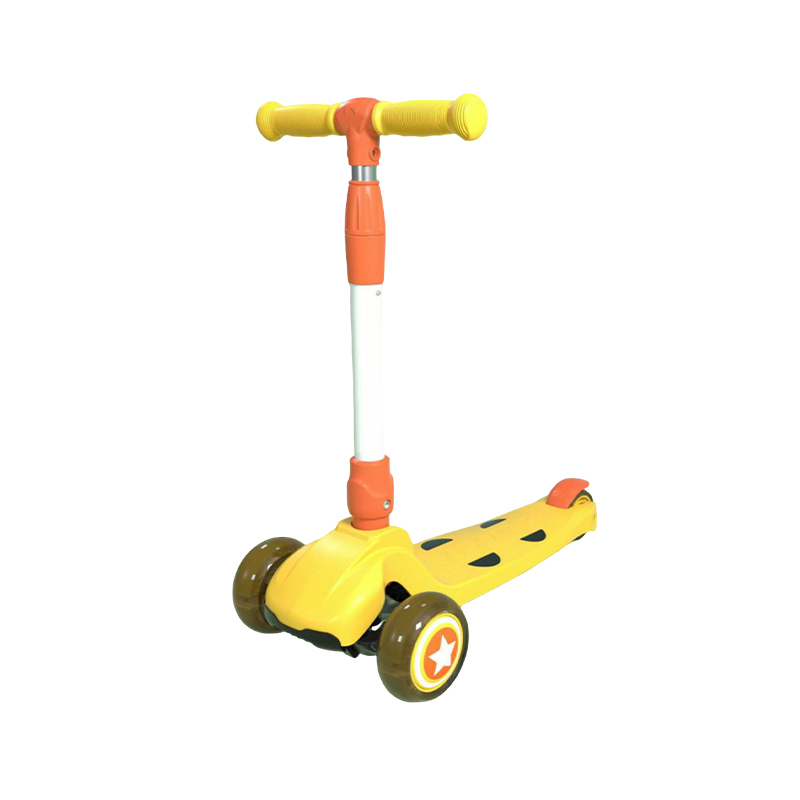Do children's kick scooters feature a sensitive and easy-to-operate braking system to enhance safety in emergencies?
Release Time : 2025-10-11
Safety is always a core concern for parents when designing a children's kick scooter, and the braking system is a crucial component in ensuring safe riding. Growing children's reaction speed, hand strength, and judgment are still developing. Whether they can effectively slow down and stop the scooter in the face of sudden obstacles, accelerating on slopes, or in crowded environments is directly related to the safety of the ride. Therefore, a kick scooter truly designed for children must have a sensitive and easy-to-operate braking system. This system not only provides braking functionality but also adapts to children's physiological characteristics and operating habits, providing a reliable safeguard for children as they explore the world independently.
Sensitive braking means a quick response, enabling effective deceleration with minimal force from the child. Excessive braking force or delayed response can catch children off guard in an emergency, missing the optimal braking opportunity. Modern children's kick scooters generally use rear-wheel friction brakes, controlled by a handbrake cable or foot brake. Handbrake design should be tailored to the size of children's hands, with an appropriate grip distance and a soft, non-slip handle to ensure easy grasp and application. Some models feature thumb-shift or fully enclosed handles, making them easy to use and even for children with limited strength. Brake cable tension is precisely adjusted—neither too tight to trigger accidentally nor too loose to affect responsiveness—to ensure precise and controlled braking.
Foot-operated brakes are more intuitive for young children. Many three-wheeled kick scooters feature a spring-loaded brake lever above the rear wheel. A child simply presses their foot, which, through a linkage mechanism, compresses the rear wheel to slow the scooter. This design requires minimal hand coordination and is particularly suitable for children learning to balance their hands. Pedal force is proportional to braking effect, allowing children to naturally master the rhythm of light pressure for a slow stop and hard pressure for an abrupt stop, gradually developing a sense of speed and control. The brake rebounds quickly, releasing the brake immediately upon lifting the foot, without affecting normal scooter operation.
Besides ease of operation, durability and stability of the braking system are equally important. Children will inevitably pedal or pull frequently during use. Therefore, the brake mechanism must be made of wear-resistant materials to ensure continued sensitivity even after prolonged use. Connectors must be secure and reliable to prevent loosening due to vibration or impact. Brake pads or friction blocks must possess excellent wear and high-temperature resistance, preventing performance degradation due to heat during continuous braking. Furthermore, the entire system must be dust and water resistant to prevent the ingress of mud, sand, and rainwater that could affect operation.
In real-world riding scenarios, a sensitive braking system helps children build confidence. Knowing they can stop safely at any time makes them more willing to try coasting, turning, and accelerating, exploring the joys of riding within safe boundaries. This sense of control and security is an important foundation for developing independence and athletic ability. Parents can also feel more at ease while accompanying their children, without having to worry about unexpected situations.
Furthermore, the very existence of the braking system serves as a foundation for safety awareness. With parental guidance, children can learn when to slow down, how to anticipate risks, and how to stop smoothly, gradually forming good riding habits. Some kick scooters also feature an assist lever or dual brakes, allowing parents to initially control speed using the handlebars, ensuring a smooth transition from assisted to independent riding.
Ultimately, a good braking system is more than just a combination of mechanical components; it's the product of a deep understanding of children's behavior and developmental needs. It integrates naturally into the riding process, allowing children to glide freely while maintaining control of speed. This sense of security is the gift parents truly desire in a childhood filled with fun and exploration.
Sensitive braking means a quick response, enabling effective deceleration with minimal force from the child. Excessive braking force or delayed response can catch children off guard in an emergency, missing the optimal braking opportunity. Modern children's kick scooters generally use rear-wheel friction brakes, controlled by a handbrake cable or foot brake. Handbrake design should be tailored to the size of children's hands, with an appropriate grip distance and a soft, non-slip handle to ensure easy grasp and application. Some models feature thumb-shift or fully enclosed handles, making them easy to use and even for children with limited strength. Brake cable tension is precisely adjusted—neither too tight to trigger accidentally nor too loose to affect responsiveness—to ensure precise and controlled braking.
Foot-operated brakes are more intuitive for young children. Many three-wheeled kick scooters feature a spring-loaded brake lever above the rear wheel. A child simply presses their foot, which, through a linkage mechanism, compresses the rear wheel to slow the scooter. This design requires minimal hand coordination and is particularly suitable for children learning to balance their hands. Pedal force is proportional to braking effect, allowing children to naturally master the rhythm of light pressure for a slow stop and hard pressure for an abrupt stop, gradually developing a sense of speed and control. The brake rebounds quickly, releasing the brake immediately upon lifting the foot, without affecting normal scooter operation.
Besides ease of operation, durability and stability of the braking system are equally important. Children will inevitably pedal or pull frequently during use. Therefore, the brake mechanism must be made of wear-resistant materials to ensure continued sensitivity even after prolonged use. Connectors must be secure and reliable to prevent loosening due to vibration or impact. Brake pads or friction blocks must possess excellent wear and high-temperature resistance, preventing performance degradation due to heat during continuous braking. Furthermore, the entire system must be dust and water resistant to prevent the ingress of mud, sand, and rainwater that could affect operation.
In real-world riding scenarios, a sensitive braking system helps children build confidence. Knowing they can stop safely at any time makes them more willing to try coasting, turning, and accelerating, exploring the joys of riding within safe boundaries. This sense of control and security is an important foundation for developing independence and athletic ability. Parents can also feel more at ease while accompanying their children, without having to worry about unexpected situations.
Furthermore, the very existence of the braking system serves as a foundation for safety awareness. With parental guidance, children can learn when to slow down, how to anticipate risks, and how to stop smoothly, gradually forming good riding habits. Some kick scooters also feature an assist lever or dual brakes, allowing parents to initially control speed using the handlebars, ensuring a smooth transition from assisted to independent riding.
Ultimately, a good braking system is more than just a combination of mechanical components; it's the product of a deep understanding of children's behavior and developmental needs. It integrates naturally into the riding process, allowing children to glide freely while maintaining control of speed. This sense of security is the gift parents truly desire in a childhood filled with fun and exploration.







